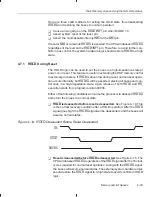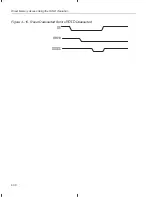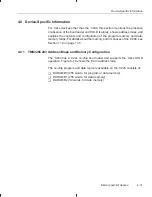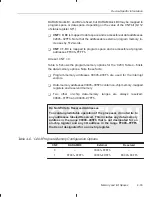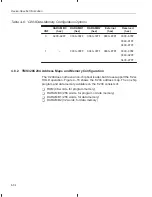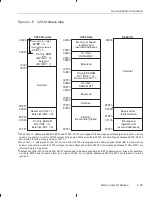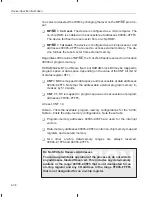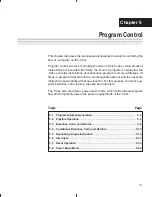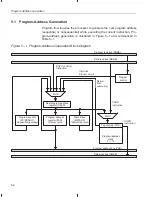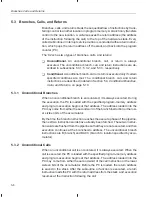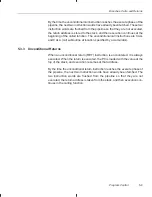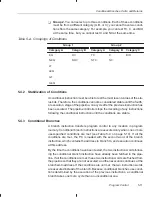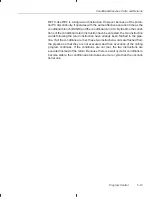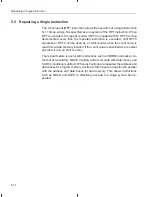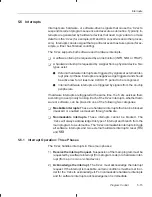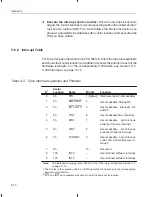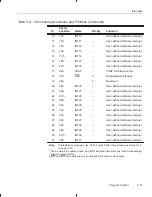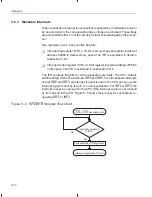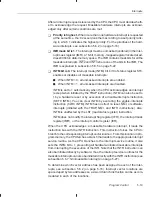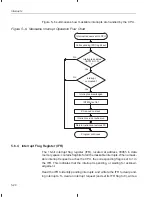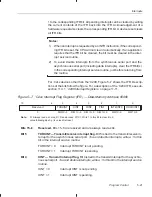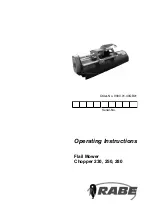
Program-Address Generation
5-6
Figure 5–3. A Pop Operation
Before Instruction
After Instruction
Accumulator
Accumulator
or memory
82h
or memory
45h
location
location
45h
16h
16h
7h
Stack
7h
Stack
33h
33h
42h
42h
56h
56h
37h
37h
61h
61h
61h
5.1.3
Micro Stack (MSTACK)
The program-address generation logic uses the 16-bit-wide, 1-level-deep
MSTACK to store a return address before executing certain instructions.
These instructions use the program-address generation logic to provide a se-
cond address in a two-operand instruction. These instructions are: BLDD,
BLPD, MAC, MACD, TBLR, and TBLW. When repeated, these instructions
use the PC to increment the first operand address and can use the auxiliary
register arithmetic unit (ARAU) to generate the second operand address.
When these instructions are used, the return address (the address of the next
instruction to be fetched) is pushed onto the MSTACK. Upon completion of the
repeated instruction, the MSTACK value is popped back into the program-ad-
dress generation logic. The MSTACK operations are not visible to you. Unlike
the stack, the MSTACK can be used only by the program-address generation
logic; there are no instructions that allow you to use the MSTACK for storage.

